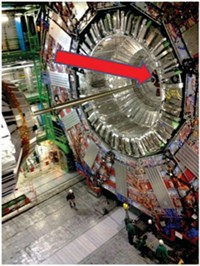Advertisement
Grab your lab coat. Let's get started
Welcome!
Welcome!
Create an account below to get 6 C&EN articles per month, receive newsletters and more - all free.
It seems this is your first time logging in online. Please enter the following information to continue.
As an ACS member you automatically get access to this site. All we need is few more details to create your reading experience.
Not you? Sign in with a different account.
Not you? Sign in with a different account.
ERROR 1
ERROR 1
ERROR 2
ERROR 2
ERROR 2
ERROR 2
ERROR 2
Password and Confirm password must match.
If you have an ACS member number, please enter it here so we can link this account to your membership. (optional)
ERROR 2
ACS values your privacy. By submitting your information, you are gaining access to C&EN and subscribing to our weekly newsletter. We use the information you provide to make your reading experience better, and we will never sell your data to third party members.
Industrial Safety
Movers And Shakers
Former OSHA head David Michaels calls for transformation of US worker safety
Agency’s longest-serving director would like to see companies mandated to ensure their production processes and products are not harmful
by Jeff Johnson, special to C&EN
June 26, 2021
| A version of this story appeared in
Volume 99, Issue 24

Fifty years ago, the US Occupational Safety and Health Administration—the first federal agency created solely to protect America’s workers—opened its doors. Part of the Department of Labor, OSHA changed the landscape of worker health and safety in the US. It is credited with cutting on-the-job deaths per day from 38 in 1970 to 14 today, despite today’s much larger workforce.
OSHA’s charge is vast: to protect millions of people laboring in factories and fields, meat processing and agriculture, construction, and every type of commerce—all of them essential to the US economy. In addition to workers who go to a job one day and never return home, 3 million are injured annually, according to industry-reported data. These numbers include only those workers known to have died or been injured as a direct result of their jobs, not those who might be harmed—for example, by exposure to a chemical with unknown or undisclosed toxicity.
US Occupational Safety and Health Administration at a glance
▸ Established by: Occupational Safety and Health Act of 1970
▸ Mission: To ensure safe and healthful working conditions for workers by setting and enforcing standards and by providing training, outreach, education, and assistance
▸ 2021 budget: $592 million
▸ Parent agency: Department of Labor
▸ Number of workplace inspections by federal inspectors in 2019: 33,393
▸ Number of workers who died on the job in 2019: 5,333
▸ Three most frequently cited violations of standards in 2020: Fall protection, construction; hazard communication, general industry; respiratory protection, general industry
Source: US Occupational Safety and Health Administration.
The agency is chronically underfunded and understaffed, however. It’s also criticized by fans and foes alike. Supporters, mostly labor union leaders and worker rights and safety advocates, say it should be more aggressive in promoting worker safety. Opponents tend to be industry leaders and conservative politicians who are generally against regulation and see OSHA as needlessly interfering in the production of valuable goods and services. And, the critics say, if the government would only step out of the way, industry would limit accidents on its own, if only to maintain production and profits.
Under President Donald J. Trump and a Republican-controlled Senate, the deregulators won out. Although Trump nominated a director, he was never confirmed by the Senate, and open inspector slots remained vacant.
The new climate under President Joe Biden “presents the perfect opportunity to build [OSHA] back much better,” says former agency director David Michaels.
Michaels knows OSHA’s strength and weakness well. He ran the agency from 2009 to 2017, which makes him the longest-serving assistant secretary of labor for occupational safety and health.
An epidemiologist by training, Michaels is now a professor at the George Washington University’s Milken Institute School of Public Health. For decades, he has applied epidemiological methods to the health and safety needs of diverse communities, including people incarcerated at New York’s Rikers Island, children orphaned by the AIDS epidemic, and workers. His career has alternated between academia and government. During a stint at the US Department of Energy, Michaels led a reform effort within its huge and troubled nuclear weapons manufacturing and cleanup program. He has a keen sense of what workers face and of both the power and shortfalls of government agencies.Michaels points out that when OSHA was created, the initial buzz brought a national focus on industrial safety, and fatalities and injuries declined. Death and injury rates have flatlined in recent years, however.
“Pouring more money into rebuilding the current system would be a mistake,” he says. “It is time to reimagine the US industrial safety and health system.”
Biden should support this, Michaels says, since he issued an executive order on his inauguration day that called for modernizing federal regulations. So too should Biden’s labor secretary, Marty Walsh, who began his career in the unionized building trades. “As a construction worker, I think I would want, first of all, safety on the job site,” Walsh told NPR in an interview in April. “When I was a young construction worker, OSHA had more of a presence on job sites—not after an accident happened, but before an accident, to make sure these job sites were safe. That was number 1.” (Biden has nominated Doug Parker, the current head of the California Division of Occupational Safety and Health, to lead OSHA, but as of C&EN’s deadline he had not been confirmed by the Senate.)
“Before OSHA, there was no government agency to call and no clear legal responsibility for employers to supply a safe workplace,” Michaels notes. “There were laws in some states, but with much less power than OSHA. There were no limits on workplace exposure to hazardous chemicals and no mechanism to bring this about and to reduce exposure.”
As a start to limiting chemical exposure, OSHA in its first couple of years turned to so-called industry consensus standards developed and used by companies. They were adopted without modification in hopes of improving them later. That proved to be nearly impossible because of OSHA’s restrictive regulatory maze coupled with opposition from industry and many members of Congress.
On average, it takes OSHA over 10 years to issue a new chemical standard, and it has issued only 32 new standards in 50 years, Michaels says. One of those was an exposure limit for silica dust, which can cause serious lung disease. OSHA began the update process in 1997 and faced significant industry opposition. When the agency issued the final standard in 2016, it dropped the limit from 250 to 50 µm per cubic meter of air over an 8 h period. “Nineteen years to get through the law’s hurdles and to update a pathetically weak standard,” Michaels says.
Michaels estimates that 90% of OSHA’s permissible exposure limits date to industry consensus standards of the 1960s. The agency itself says that it “recognizes that many of its permissible exposure limits (PELs) are outdated and inadequate for ensuring protection of worker health.”
“If you look at the large, global chemical manufacturers, none of them use OSHA standards, because they know the standards are not safe,” Michaels says. But even when manufacturers follow stricter standards to protect their workers, the weaker OSHA standards put companies at legal risk. For instance, if a company sells a chemical to another that follows the agency’s standards and a worker gets sick, the worker and the buyer may sue the supplier, Michaels says. “It is in the long-term interest of large chemical companies to improve OSHA standards, and some have quietly told us so.”
Industry support is what it finally took for OSHA to update its standard for beryllium, which can also cause serious lung disease. The DOE uses beryllium in nuclear weapons and developed a strong standard for exposure during Michaels’s time there. Decades slipped by and finally, with support from industry and unions, OSHA adopted the DOE standard for all US workplaces that use beryllium. That standard was one of Michaels’s final acts at the agency.
Meanwhile, whether standards are strong or weak, penalties for breaching them are minimal. OSHA’s maximum penalty for a serious violation is merely $13,653. And OSHA inspectors—or even those at the 22 state agencies that operate under its umbrella—are unlikely to find violations on their own. In total, the US has only about 5.6 workplace safety inspectors for every million workers. Forty years ago, there were about 17 per million workers.
“I have been told by chemical manufacturers that they see OSHA fines and penalties as inexpensive industrial hygiene consultations” rather than as a deterrent to allowing unsafe workplaces, Michaels says. “Meaning they have to pay more for an outside consultation than they have to pay for an OSHA fine,” he adds. “It is a means for a company to get a good and cheap assessment by a regulatory agency with little risk or cost.”
These failings, combined with a growing number of companies that claim not to be responsible for the safety of contract, temporary, or gig workers, demand a rethinking of US industrial safety law, Michaels says.
He wants to initiate a national conversation about worker safety regulations in the US and hopes that Biden’s executive order will lay the groundwork for that examination and necessary changes.
Michaels suggests that a regulatory approach similar to that of Australia, New Zealand, and a few other countries could serve as a model to address the changing workforce. Those countries have a “duty of care” mandate: companies must ensure and demonstrate their production processes and products are not harmful to their workers, their customers, or the public. The definition is broader than the traditional employer-employee relationship that currently serves as the basis for US safety laws, Michaels notes.
It would require a significantly different approach to safety regulation. Other fundamental problems of OSHA’s 50-year-old regulatory system, such as low penalties and many opportunities for opponents to stall or block stronger regulations, must also be addressed to enhance safety, Michaels says.
“It is time for a bold new approach to workplace safety and an overhaul of the system.”
Jeff Johnson is a freelance writer based in the US. A version of this story first appeared in ACS Chemical Health & Safety: cenm.ag/overhaulosha.




Join the conversation
Contact the reporter
Submit a Letter to the Editor for publication
Engage with us on Twitter